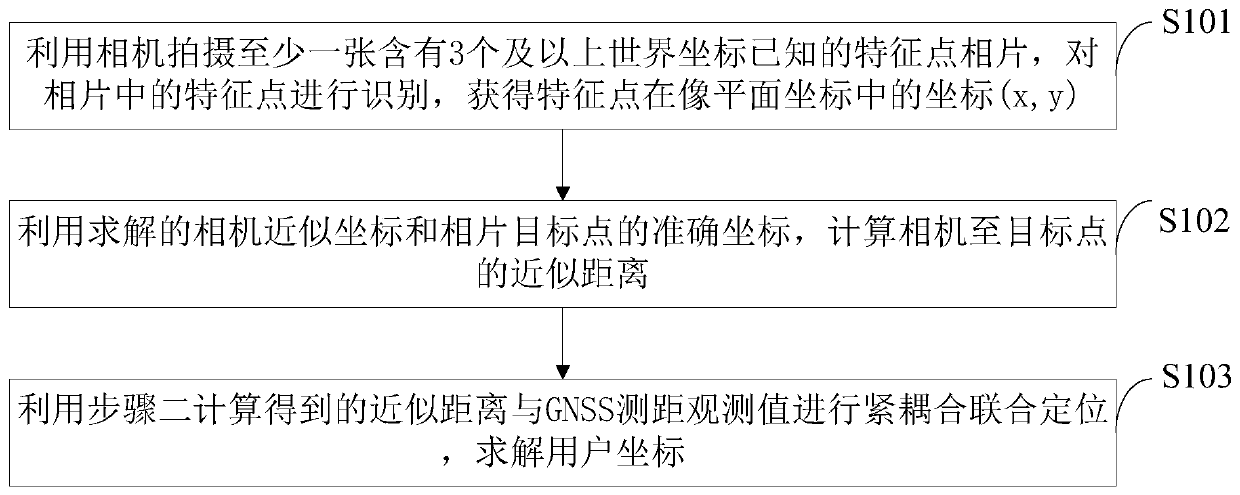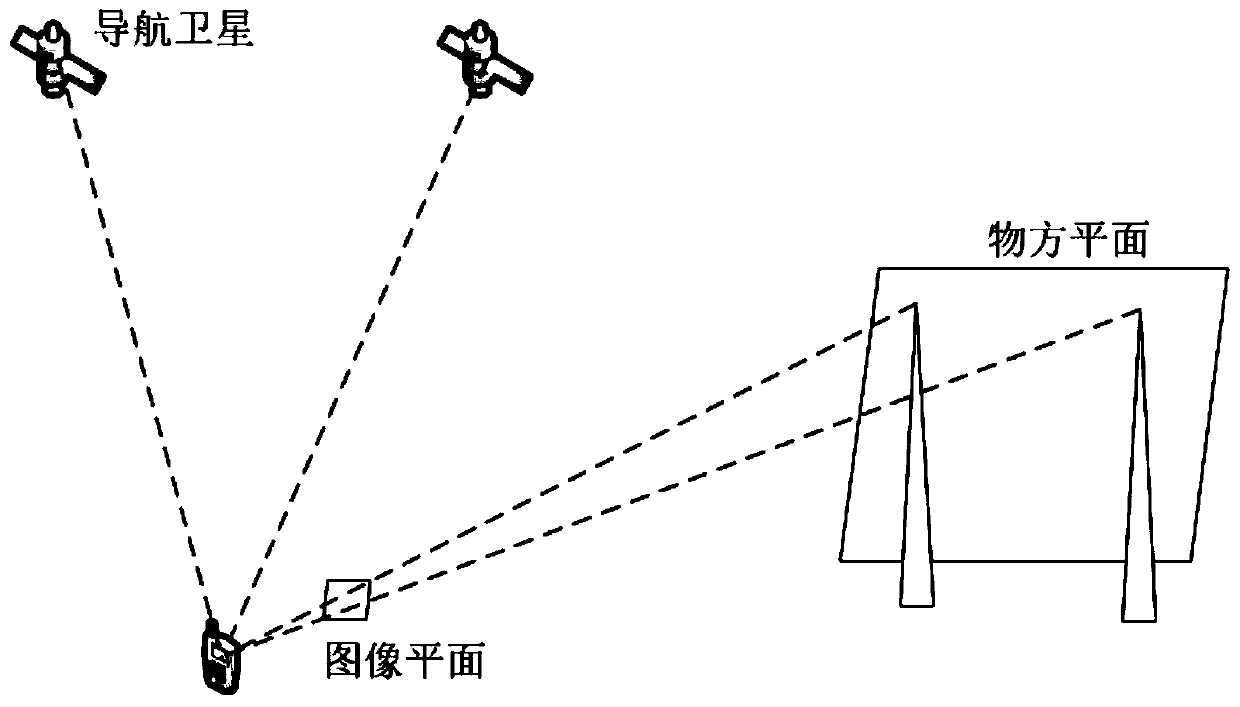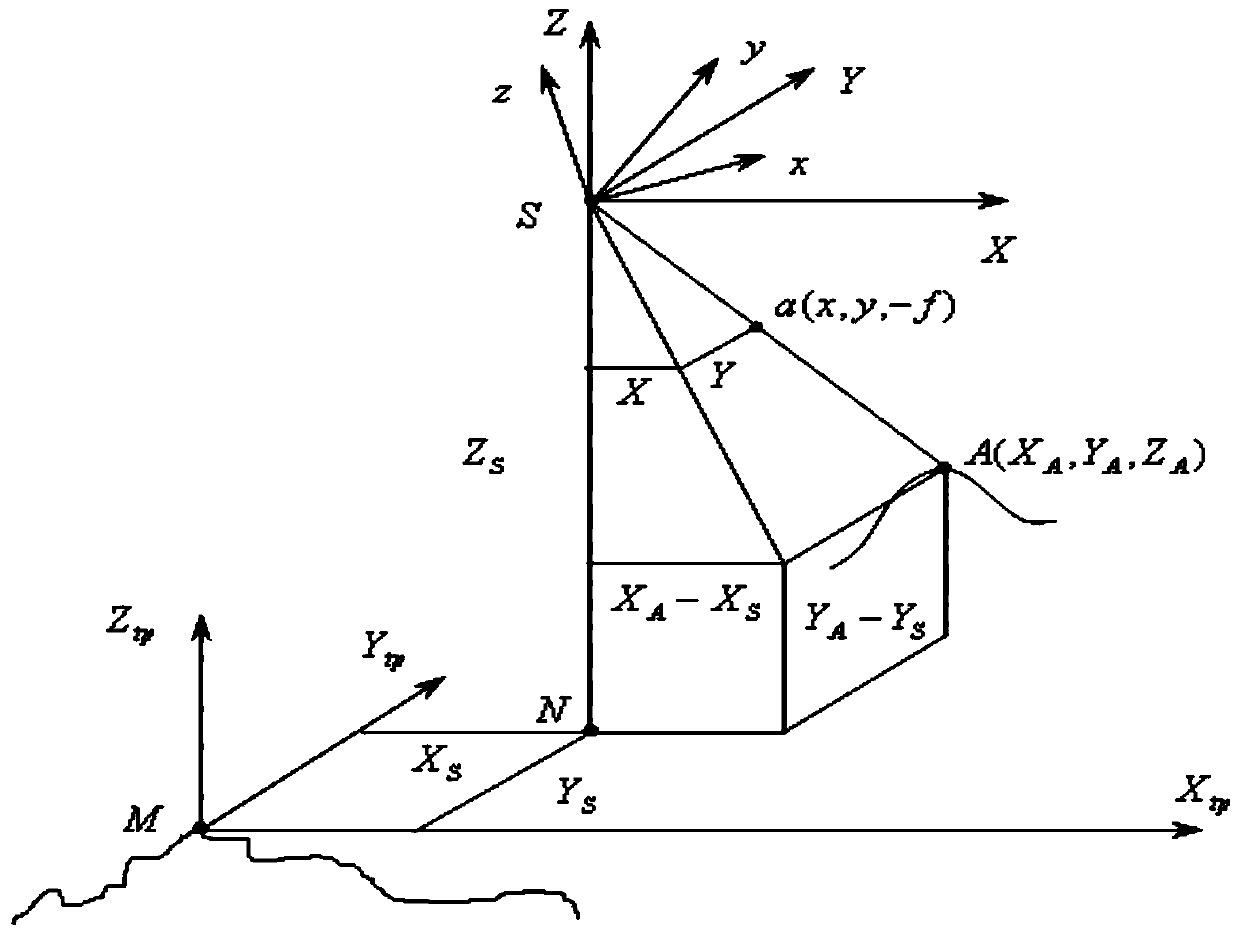Tight coupling positioning system and method using visual images and GNSS ranging signals
A tightly coupled and visual technology, applied in the field of navigation and positioning, can solve the problems of decreased positioning performance and availability, and achieve the effects of easy promotion and application, improved availability and reliability, and low construction and maintenance costs
- Summary
- Abstract
- Description
- Claims
- Application Information
AI Technical Summary
Problems solved by technology
Method used
Image
Examples
Embodiment
[0078] According to a certain number of "visual base stations" with reasonable distribution in the image coverage area (the coordinates of their image points and ground points are known), use the collinear condition equation to solve the orientation elements Xs, Ys, Zs, ψ, ω, κ outside the image . Before solving the outer orientation elements, it is necessary to accurately calibrate the inner orientation elements of the camera by using the grid marker points to eliminate the influence of lens distortion. In the following introduction, it is assumed that the internal parameters of the camera have been calibrated in advance and the lens parameters have been properly calibrated.
[0079] The first step is to identify the feature points in the photo. The method of feature point identification in the photo can use a relatively mature algorithm, such as the Gaussian Laplacian operator detection method (LOG), Hessian matrix determinant method (DOH) , Scale invariant feature transfor...
PUM
 Login to View More
Login to View More Abstract
Description
Claims
Application Information
 Login to View More
Login to View More - R&D
- Intellectual Property
- Life Sciences
- Materials
- Tech Scout
- Unparalleled Data Quality
- Higher Quality Content
- 60% Fewer Hallucinations
Browse by: Latest US Patents, China's latest patents, Technical Efficacy Thesaurus, Application Domain, Technology Topic, Popular Technical Reports.
© 2025 PatSnap. All rights reserved.Legal|Privacy policy|Modern Slavery Act Transparency Statement|Sitemap|About US| Contact US: help@patsnap.com



